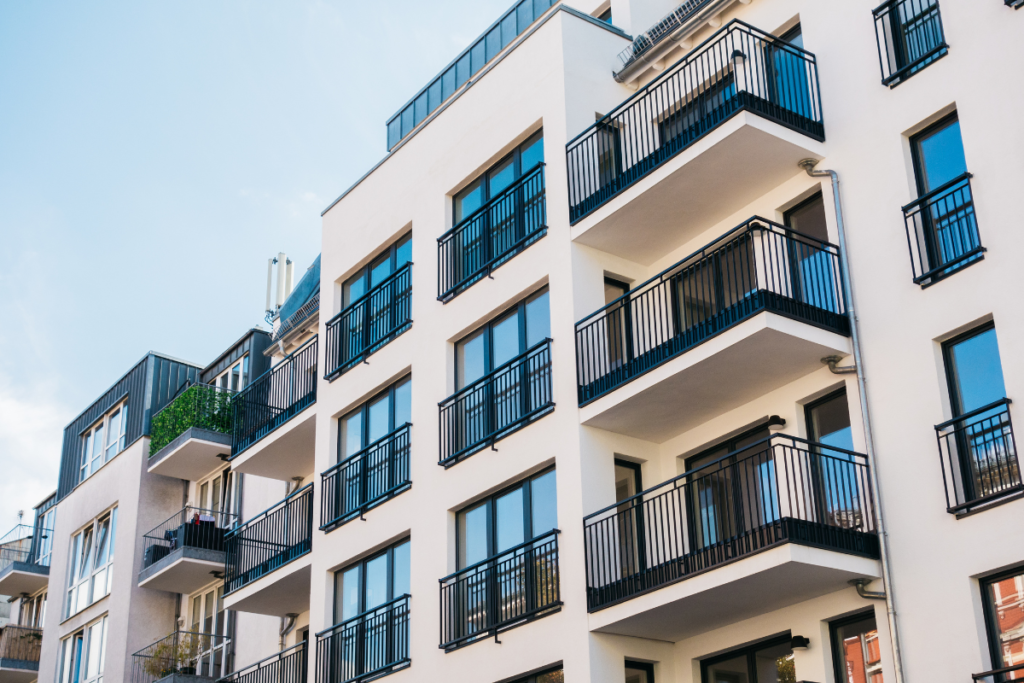EWS1 certificates have become an important factor for those buying, selling, or remortgaging flats in high-rise buildings. Introduced to address fire safety concerns after the Grenfell Tower tragedy in 2007, these certificates ensure that residential buildings meet strict safety standards.
But what is an EWS1 certificate, and why does it matter for property transactions?
In this guide, we’ll clarify the purpose of EWS1 certificates, the process for obtaining one, and the impact they have on homeowners and potential buyers.
Table of Contents
What is an EWS1 certificate?
An EWS1 (External Wall System) certificate is a form used to confirm that the external wall systems of residential buildings have been assessed for fire safety by a qualified professional.
This certificate was introduced in 2019 by the Royal Institution of Chartered Surveyors (RICS), the Building Societies Association, and UK Finance in response to the Grenfell Tower fire and subsequent concerns about cladding and fire safety in high-rise buildings.
The primary purpose of the EWS1 certificate is to provide lenders, buyers, and residents with the assurance that a building’s external wall system does not pose an undue fire risk.
The assessment involves a thorough inspection by a qualified fire engineer or surveyor, who evaluates the materials used and their potential fire hazards. If the building passes the assessment, it is granted a certificate, which remains valid for five years.
This shouldn’t be confused with EPC certificates, which are used to determine a property’s energy and environmental performance.
Why flats need them
These certificates are important for several reasons, primarily related to safety, marketability, and legal compliance.
Safety assurance
First and foremost, the certificates provide assurance to residents and property owners that their building has been evaluated for fire safety risks. This is particularly important in high-rise buildings, where a fire can have devastating consequences.
Knowing that the external wall systems have been inspected and deemed safe can offer peace of mind to everyone involved.
Marketability and property value
From a market perspective, having a certificate can significantly impact a property’s value and its attractiveness to potential buyers. Properties with a certificate are generally more appealing because buyers and mortgage lenders can be confident in the building’s safety. Conversely, flats without an EWS1 certificate may be deemed risky, making it difficult to secure financing or attract buyers.
For those interested in portfolio diversification, ensuring each property has the necessary safety certification is very important.
Legal and regulatory requirements
In some cases, obtaining an EWS1 certificate may be a legal requirement, particularly for buildings with certain types of cladding or those exceeding a specific height.
Compliance with these regulations is a requirement not only to avoid legal repercussions but also to ensure that properties can be legally sold or refinanced.
Who needs EWS1 certificates?
Not all buildings require a certificate. The need for this certification depends on several factors, including the building’s height and the materials used in its construction.
Generally, buildings over 18 metres (approximately six storeys) tall with certain types of cladding will require an EWS1 assessment.
However, buildings under 18 metres may also need a certificate if they have combustible materials in their external wall systems.
The criteria can sometimes be complex, and it’s advisable for property owners to consult with a qualified professional to determine if their building needs an EWS1 assessment.
The EWS1 assessment process
Obtaining a certificate involves several steps and requires the expertise of a qualified professional.
- Initial Inspection: A qualified fire engineer or surveyor conducts an initial inspection of the building’s external wall systems.
- Detailed Assessment: If necessary, a more detailed assessment is performed, which may include taking samples of the materials used in the cladding.
- Report and Certification: The results of the assessment are documented, and if the building meets the required safety standards, a certificate is issued.
The time it takes to complete an EWS1 assessment can vary depending on the building’s size and complexity. On average, it may take several weeks to a few months. The costs can also vary, typically ranging from a few thousand pounds to significantly more for larger buildings.
Challenges and controversies
While EWS1 certificates are required, the process of obtaining them can be a challenge.
One of the most significant issues is the backlog and delays in the assessment process. There is a limited number of qualified professionals who can perform these assessments, leading to long wait times for property owners.
Additionally, the costs associated with the assessment can be prohibitive for some homeowners, especially those in smaller buildings or those already struggling financially.
The financial implications of not having an EWS1 certificate can be severe. Properties without this certification may be difficult to sell or refinance, leading to a decrease in property value.
For homeowners looking at selling your property quickly, the absence of an EWS1 certificate can be a major hurdle.
How it affects the property market
EWS1 certificates have had a significant impact on the property market, particularly for high-rise flats.
Property transactions
The presence or absence of an EWS1 certificate can make or break a property transaction. Mortgage lenders often require this certification before approving a loan, and without it, buyers may struggle to secure financing.
This has led to a situation where many properties are effectively unmortgageable without an EWS1 certificate.
Mortgage lenders and insurers
Mortgage lenders and insurers have become increasingly cautious about properties with cladding issues. An EWS1 certificate can provide the necessary assurance to proceed with lending or insuring a property after a property valuation. Without it, lenders may refuse to finance the purchase, and insurers may deny coverage.
Ready to sell your flat?
If you already have an EWS1 certificate and want to sell your flat quickly, considering a below market value (BMV) sale might be a practical option. BMV sales can help you find motivated buyers and complete the transaction within 28 days, reducing the stress and uncertainty often associated with property sales.
Selling your property below market value doesn’t mean you’re losing out; it can be a strategic move to attract serious buyers and expedite the sale process. If you’re interested in exploring this option, our team at OT Property Group is here to assist you every step of the way. Contact us today to learn more about how a BMV sale could benefit you.


